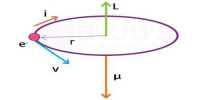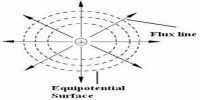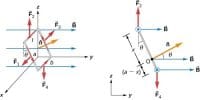Although transformers are very competent devices, small energy losses do happen in them due to some reason.
Causes Energy losses in a transformer:
(1) Hysteresis loss
The repeated magnetization and demagnetization of the iron core caused by the alternating input current produces the loss in energy called hysteresis loss. The repeating core magnetization process expends energy and this energy appears as heat. This loss can be minimized by using a core with a material having the least hysteresis loss. The heat generated can be kept to a minimum by using a magnetic material which has a low hysteresis loss. Alloys like mumetal and silicon steel are used to reduce hysteresis loss.
(2) Copper loss
The current flowing through the primary and secondary windings leads to the Joule heating effect. Hence some energy is lost in the form of heat. Thick wires with considerably low resistance are used to minimize this loss.
(3) Eddy current loss (Iron loss)
Induced currents circulate in the core and cause it resistive heating. The varying magnetic flux produces an eddy current in the core. This leads to the wastage of energy in the form of heat. This loss is minimized by using a laminated core made of stelloy, an alloy of steel. The eddy currents cause heat loss. The heat loss, however, can be reduced by having the core laminated. The energy loss can be minimized by laminating the core i.e. using thin sheets of soft iron plates insulated from each other.
(4) Flux loss
The flux produced in the primary coil is not completely linked with the secondary coil due to leakage. This results in the loss of energy. This loss can be minimized by using a shell type core. When part of the magnetic flux of the primary coil fails to reach the secondary coil, it is referred to as magnetic flux leakage.
(5) Resistance of windings
Current flowing through the windings causes resistive heating of the conductors. The low resistance copper wire used for the windings still has resistance and thereby contribute to heat loss. Energy loss through resistance can be minimized by using thicker copper wires.
(6) Mechanical losses
The alternating magnetic field causes fluctuating electromagnetic forces between the coils of wire, the core, and any nearby metalwork, causing vibrations and noise which consume power.
In addition to the above losses, due to the vibration of the core, the sound is produced, which causes a loss in the energy. Manufacturers are developing techniques that optimize these losses based on the expected loading.















